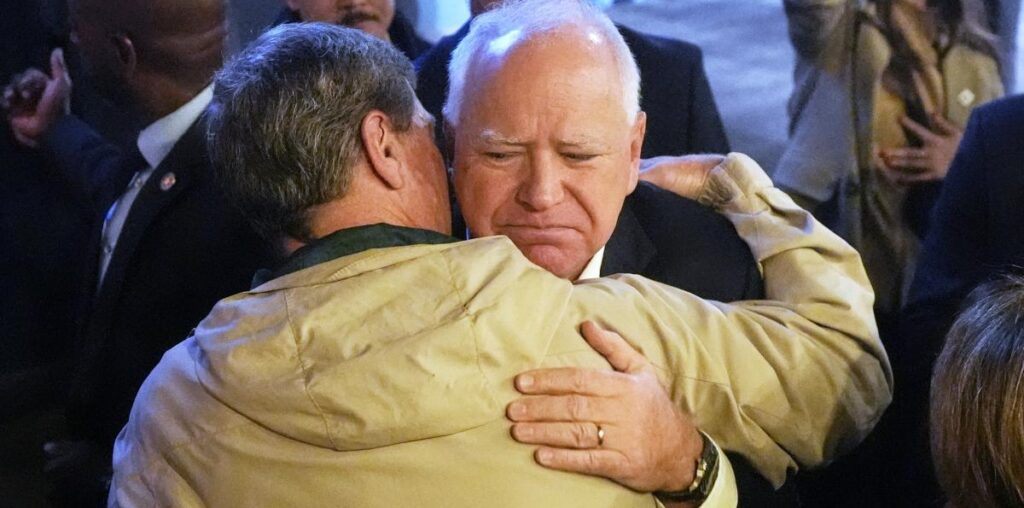MINNEAPOLIS (AP) — Gov. Tim Walz faces a new era of divided government when he returns home from the presidential campaign trail, now that Republicans appear to have broken the Democratic trifecta that helped put him on Kamala Harris’ radar.
While Democrats will keep their one-seat majority in the Senate, Republicans gained enough seats in the election to potentially tie control of the House. The chamber stood at 65-65 Wednesday afternoon, and would end in a 67-67 tie if the leaders of the last four undeclared races remain ahead, although two of them are so razor-thin that automatic recounts have been triggered unless lawmakers waive them.
The last time the House was tied was in 1979, and the history of that legislative session suggests that power-sharing will be contentious.
In House District 14B, in the St. Cloud area, Democratic incumbent Dan Wolgamott led by just 28 votes over Republican Sue Ek in unofficial results as of midday Wednesday, while in District 54A, in the Shakopee area, incumbent Democrat Brad Tabke led Republican Aaron Paul by just 13 votes. Two other races had margins of 225 votes and 160 votes with 99% of the votes counted.
Recounts in legislative races rarely change outcomes, according to Minnesota’s nonpartisan Legislative Reference Library. Fluctuations in the vote totals, if any, usually stay within single digits. The prominent exception in recent decades was in Minnesota’s U.S. Senate race in 2008, when Democrat Al Franken came from behind to unseat Republican Norm Coleman by 312 votes after an eight-month recount and court battle.
Democratic legislative leaders warned ahead of the 2024 election that split control would be a recipe for gridlock. A tie is bound to force difficult compromises on taxes and spending as lawmakers try to negotiate deals to achieve a constitutionally mandated balanced budget in 2025.
House Democratic and Republican leaders said little early Wednesday as the prospect of a tie came into focus.
“Tonight, House Republicans broke the Democrat trifecta and restored balance to Minnesota,” Minority Leader Lisa Demuth, of Cold Spring, said in a statement.
Democratic House Speaker Melissa Hortman, of Brooklyn Park, was more cautious.
“It is important to be patient while we wait for results to be finalized,” Hortman said.
In the Senate, Democratic Majority Leader Erin Murphy, of St. Paul, said in an interview that her narrow majority is “going to continue to lead with our values,” meaning their priorities will include affordable health care and child care, housing and infrastructure.
Minnesota has usually had some degree of divided government over the last several decades. The 2019 session — the first under Walz — wasn’t always pretty, but both sides agreed it was fairly productive despite Republicans holding the Senate and Democrats controlling the House.
Democrats gained their trifecta — control of the governor’s office and both legislative chambers — in the 2022 election and used it to enact a long list of pent-up priorities last year. Those included stronger protections for abortion rights and trans rights, child tax credits, paid family and medical leave, free school meals for all kids, and gun safety measures, to name just a few.
Democrats also held full power under Gov. Mark Dayton in the 2013 and 2014 legislative sessions and in the four sessions from 1987-1990 under Gov. Rudy Perpich. But Minnesota Republicans haven’t had a trifecta since the late 1960s under Gov. Harold LeVander, when legislative races were technically nonpartisan and lawmakers caucused as either conservatives or liberals.
In 1979, GOP and Democratic leaders came up with a power-sharing agreement after weeks of difficult negotiations that gave Republicans the speakership, while Democrats got the chairmanships of the three most powerful committees. The arrangement worked fairly smoothly for most of the session. Bills that advanced through the process generally had bipartisan support. But the deal fell apart in the closing days, and lawmakers needed a one-day special session to finish off the year’s must-pass bills.
According to a report by the National Conference of State Legislatures, tied chambers aren’t that unusual nationwide. Every election in even-numbered years from 1984-2010 led to at least one deadlocked chamber somewhere, and they’ve often worked out better than expected, the report found.

